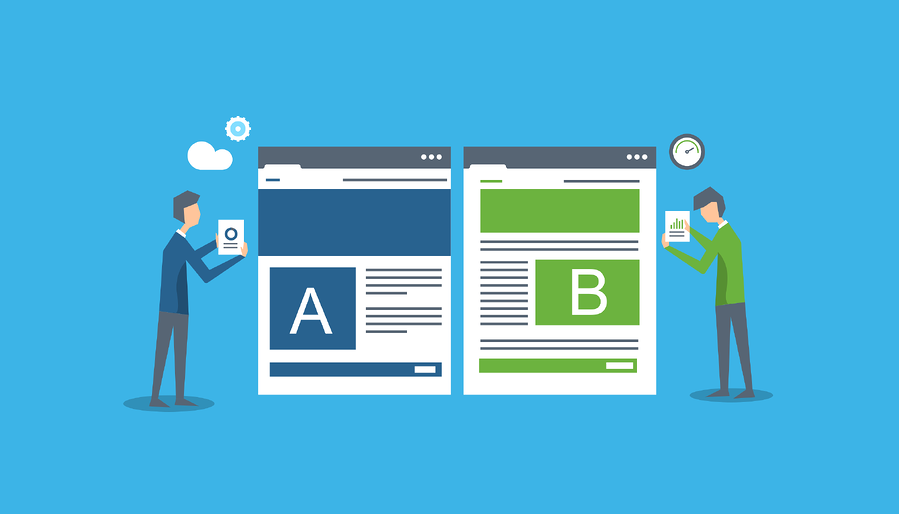Loss Leader Pricing For E-commerce Businesses: All What You Need To Know
Have you ever noticed brands making offers and wondered how they could afford it? How could a store have a buy-one-get-one-free campaign and still make a profit?
As a business owner yourself, you’ve probably done the math and figured they’d be losing money. But at the same time, it seems like their business is booming!
So what’s their secret? What are they doing exactly?
The answer is they’re using loss leading pricing or a loss leader strategy.
But what is a loss leader pricing strategy? And how can brands not go broke while running such a campaign?
Join us as we dive deep into what loss leader pricing is, its advantages and disadvantages, and what qualifies as a successful loss leader strategy.
We will cover these points:
- What is loss leader pricing?
- Examples of loss leader pricing
- Advantages of loss leader pricing
- Disadvantages of loss leader pricing
- Is the loss-leader pricing strategy profitable?
- Is loss leader pricing illegal?
Let's go deeper and know everything about loss leader pricing
What is loss leader pricing?
A loss leader pricing is a marketing and sales tactic used to attract customers to a new product or an online or walk-in store.
The premise of a loss leader pricing strategy is simple: A brand reduces the price of a single product so much that they barely make a profit from it.
They use this terribly-low-priced product or service as a means to attract customers.
When customers see this low-cost product, they can’t help but buy it. However, that’s not the brand’s only target.
Rather their target is to entice shoppers to
buy this product and others once they walk into the store.
For a loss leader pricing strategy to be successful, a brand needs to retain the customers they’ve acquired through the loss leader deal.
Keep reading to learn more about the advantages and disadvantages of loss leader pricing.
Further reading: 45+ E-commerce Vocabulary, Metrics and Biz Terms You Need to Know
Examples of loss leader pricing
You’ve probably seen many examples of loss leader pricing – although you may not have been aware of the tactic then.
A good and quite common example of the loss leader strategy at work is when companies have buy-one-get-one-free offers or when they have giveaways, free items, or price a product so low, it’s too-good-to-be-true.
Many commonly-purchased household products are considered loss leader items. These include grocery staples such as eggs, milk, and toilet paper.
Supermarkets are the biggest users of the loss leader pricing strategy. Often, they’d run massive discounts on must-have household items and place them either further in the store or where they are surrounded by other pricier products.
Grocery stores that place the milk section at the far end of the store are also using this type of marketing strategy. How? You see, by placing the milk away from the exit, a customer that goes in to buy milk ends up passing by a host of other products and offers. So instead of buying milk, they end up buying a lot more than what they came in for.
Similarly, companies that produce shaving blades tend to offer free products and samples. And since most of these products are disposable, you’ll have to buy more at some point.
From grocery basics to power tools to gaming consoles, Walmart is one of the top retailers that regularly use the loss leader strategy online and in-store.
Another mega brand that’s built its business on loss leader items and pricing is Amazon. The company has regularly used this strategy for its kindles and their prime membership.
And if you’ve ever run a massive discount during a Black Friday sale, then you’ve unknowingly participated in a kind of loss leader marketing effort.
Advantages and disadvantages of the loss leader strategy
So why do retailers use loss leader pricing? It obviously comes with a few perks.
And while Walmart and Amazon are mega-sized businesses, what about smaller businesses? Can they use that strategy too?
To answer that, let’s look at the advantages and disadvantages of loss leader pricing:
Advantages of loss leader pricing
1. High volume purchases
By reducing the price of one or more products to below market average, brands entice customers to buy more. This may result in a large volume of purchases.
However, businesses need to remember that a lower price on one product means they’re losing money on that product.
2. Customers buy products they don’t need
When customers see discounts that are too good to be true, they can’t help but buy them.
‘I better by this product before they raise its price.’
‘Honey I couldn’t leave this BBQ at this super-low price! So I bought it!’
3. Loss leader pricing is a customer acquisition tool
One of the main reasons brands use the loss leader pricing strategy is to acquire new customers.
For new brands, loss leader pricing is also called penetration pricing because it’s an attempt to break into the market.
Further reading: 8 Customer Acquisition Metrics You Need to Start Tracking Today
Customers are generally weary of new brands. Moreover, customer behavior indicates that many have a habit of shopping at one store or brand all the time.
However, by using loss leader pricing, new brands reduce the risk for customers and entice them to try their brand. It’s like a ‘nothing ventured, nothing gained’ but with ‘little ventured.’
In this case, the pricing strategy acts as means to get customers to switch brands. However, as you’ll notice in the disadvantages of loss leader pricing, this strategy isn’t always the best for the brand itself.
4. Clears away inventory
Some retailers tend to have leftover inventory that they need to get rid of to make space for new products. You’ll often find fashion retailers using loss leader pricing to do away with last season’s clothing.
H&M uses loss leaders at the end of the summer and winter seasons, selling products at super low prices.
The alternative for some brands is to simply throw them away, making the loss leader strategy a better and more profitable alternative.
Their thinking at this point is ‘We no longer need this. So we can either try to sell it at a super low price – and whatever money we make off it is fine – or just get rid of it.’
5. Using loss leader pricing to promote products
Part of using the loss leader strategy is to get customers to buy more products. But you don’t have to leave it to chance.
Instead, you can use this pricing tactic to get customers to buy complementary products to the ones they on-sale ones they bought.

Use your loss leader products to sell other products in your store. You can do this in both an online and offline setting. However, being an e-commerce business opens various options for you when using loss leaders.
For example, you may be looking to sell a certain line of sneakers. At the same time, you’ll be running loss leader pricing on various types of socks, sports gear, and so on.
You can use social proof, reviews and star-ratings, and other ideas to spur the sale. This is a bit like cross-selling in e-commerce.
Disadvantages of loss leader pricing
No pricing strategy is without downsides. And the loss leader strategy is no exception.
In fact, many retailers and particularly small businesses consider this strategy shameful or unethical.
Here are the main disadvantages of loss leader pricing:
1. Customers may only buy the loss leader
This is a disadvantage for businesses running loss leader pricing. While the target is to get customers to add more items to their cart, some customers snag the deal and leave, resulting in losses for the business.
2. Customers leave after the price is restored
In many cases, customers might be willing to switch brands in favor of a heavily-discounted product.
However, once the brand raises the price of that product, these customers go back to the competition.
3. Loss leader pricing is hurtful to small businesses
Small businesses are the biggest losers in the loss leader pricing strategy scenario.
Generally, small businesses can’t make up for the losses incurred by the loss leader strategy. This makes it very hard for them to compete with larger brands using this sales tactic.
Large brands are able to withstand the loss because they have the budget and capability to do so. They also have a host of products that they can rely on for profits.
The same can’t be said for smaller businesses who neither have a large volume of purchases or a large budget.
4. Loss leaders hurt suppliers
Another group that suffers because of this pricing strategy is the suppliers.
If a brand runs a loss leader pricing strategy on one or more of its products, it’s likely to get the supplier to reduce their price as well so it can reduce its overall losses.
This causes suppliers to lose a lot of money. It also negatively affects the brand-supplier relationship.
5. Customers may wait for discounts
If you run loss leaders on a regular basis, you end up conditioning your customers to wait for discounts.
If this happens, your loss leader pricing strategy will have negatively impacted your store and sales. Because even if customers are considering a product, they’re likely to wait and see if it will be discounted.

This often happens with one-time purchases or in areas like fashion and electric appliances retail.
Customers aren’t going to buy a microwave or even a pair of trousers every day. And because of that, they don’t mind waiting a few more days or even a month in the hopes of a mega sale.
Is the loss-leader pricing strategy profitable?
To consider whether a loss leader pricing strategy profitable is or not, let’s first understand when this strategy is considered successful.
A loss leader is an item that’s priced at a much lower value than its market cost and that’s often considered a loss to the company or brand that’s selling it.
However, to make up for that loss, the brand may place it around more expensive products or raise the prices of other standard items.
Brands and grocery stores often use loss leader pricing or penetration pricing for a limited-time sale or for a certain target like entering a new market or attracting new customers.
Retailers who use loss leaders expect to make up for their losses through the sale of neighboring items. After all, no brand intentionally wants to make a loss.
And that’s how a loss leader strategy should work.
You want to limit your losses as much as you can. And since it acts as a customer acquisition method, loss leaders can help you reduce your average customer acquisition cost.
So if you can complete the equation of:
- reducing the price of a product by A LOT
- attracting customers AND retaining them
- Making an overall profit
Then you have a successful loss leader pricing strategy.
“The more competitive an industry, the more likely […] competitors use loss-leader products in certain categories or throughout their stores.”
And like all business strategies, you’ll have to decide if loss leaders are worth your time and effort or if you’d rather conduct your marketing and run your ads the traditional way.
However, it’s worth mentioning that many businesses and commerce stakeholders aren’t big fans of loss leader pricing.
Is loss leader pricing illegal?
For starters, most small businesses, suppliers, and distributors view loss leader pricing as unfair and unethical practice.
For small businesses, it’s harder to take on the loss as opposed to large retailers like Walmart and Home Depot.
But there are many countries around the world that view the loss leader strategy as illegal, calling it an anti-competitive practice. (Black Friday sales excluded)
The US Federal Trade Commission has listed the states where using loss leader pricing is 1) completely banned, 2) partially banned or banned on selected items, and 3) legal.
Conclusion
Loss leader pricing comes with various advantages, but it comes with an equal number of downsides.
E-commerce businesses have a better chance of experimenting with loss leaders to see who they work for them. However, businesses based in the United States will need to review their state’s laws to ensure they are not breaking any.
It’s worth remembering that:
A loss leader pricing strategy is only successful when the loss leader product acts as a customer acquisition and retention tool and results in more sales.
Further reading

